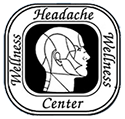Migraine Headache “Not just in your head”
 Do you suffer from headaches? Have you been told your headaches are “sinus headaches,” “tension headaches,” “stress headaches,” or allergies? Do you treat your headaches often with prescription, over-the-counter, or sinus medications? How often do you experience “regular” headaches? Perhaps even more importantly, how often do you have truly pain-free days each week or month?
Do you suffer from headaches? Have you been told your headaches are “sinus headaches,” “tension headaches,” “stress headaches,” or allergies? Do you treat your headaches often with prescription, over-the-counter, or sinus medications? How often do you experience “regular” headaches? Perhaps even more importantly, how often do you have truly pain-free days each week or month?
Many individuals who experience frequent headaches actually have migraine. While migraine is one of the most common medical conditions, it is also one of the most under-diagnosed conditions. Over 36 million people in the United States alone suffer from migraine headache. It occurs in up to 18% of all women and 6% of men. Unfortunately only 50% of individuals who have migraine obtain the correct diagnosis, and even fewer will obtain specific migraine treatments designed to reduce their headache burden.
Migraine headache is often characterized as an intermittent moderate or severe throbbing headache pain associated at times with nausea, vomiting, sensitivity to lights, sensitivity to sounds, or sensitivity to movements. Many people will prefer to rest in a dark and quiet room during a migraine headache. The location of migraine pain is not specific, and may occur in the sinus area or back of the head, neck, or shoulders.
Migraine is not just a “headache” but a chronic, genetic, and potentially progressive disorder. Headache pain is one of the main features of a migraine disorder, but many individuals will also suffer from non-headache migraine problems such as gastrointestinal conditions or dizziness and vertigo.
Many patients have experienced migraine headaches for five or ten years or longer without a diagnosis. They have been told that their headaches are “normal” and have been given pain medications, such as narcotics or opioids, to treat them. This type of treatment is not ideal and may lead to overuse of pain medications, physical addiction,
and even worsening of the migraine disorder. Many patients have other medical conditions, such as fibromyalgia, bipolar disorder, depression, or obesity which may complicate their migraine condition and make their diagnosis more challenging to treat.
While there currently is no cure for migraine, there are highly effective treatments available. Over the years many migraine specific therapies and approaches have been developed. Most patients in a headache practice will be treated with a combination of migraine-specific medications, interventional procedures, and a focus on a wellness lifestyle.
Migraine medications are traditionally divided into acute and preventive options. An acute medication is one used to treat an individual headache when it occurs. Traditionally the most effective acute medication is a triptan. Triptan medications have been designed to treat migraines specifically. Triptans have been prescribed for over 20 years and include such products as sumatriptan (Imitrex), rizatriptan (Maxalt), naratriptan (Amerge), and zolmitriptan (Zomig). All of these medications are now available in generic tablet form. If oral tablets are not effective for your migraine headache pain, then nasal sprays (sumatriptan and zolmitriptan (Zomig NS)) are available. Some individuals with migraine will experience severe nausea or vomiting; awaken with headache pain; or will have headache pain that progresses rapidly. In these situations an injectable triptan may be the best choice. Sumatriptan injections are available as generic injections and as Sumavel DosePro (SDP). While triptans are considered the “gold-standard” medication for acute migraine headache, not all individuals are candidates for this treatment. Specifically, triptans should be avoided in individuals with known vascular heart disease or heart attack, history of stroke or transient ischemic attack (TIA), and other significant vascular or blood vessel diseases.
Even more important than treating an individual headache is preventing the headache from occurring. One of the most important advances in the field of headache medicine was the recognition and use of effective preventive medications. A successful preventive medication is often able to reduce the frequency of migraines; reduce the severity of the migraine headache; reduce the duration of the migraine event; and improve the effect of an acute medication. Migraine preventive medications have been borrowed from other categories of medications. The most common preventive medications come originally from those used to treat high blood pressure, depression, and seizure disorders.
Certain procedural therapies are effective in reducing the burden of migraine. Nerve blocks and trigger point injections are used to reduce peripheral pain and inflammation. This treatment is often given with a combination of steroids and anesthetics. It represents a short-term method to reduce migraine pain. Botulinum toxin (BOTOX) is one of the newest procedural treatments available. It is an FDA-approved preventive treatment for chronic migraine, a subtype of migraine characterized by 15 days or more of headache every month. This is the same botulinum toxin that is used for cosmetic purposes. Botulinum toxin injections are often effective for three months, requiring four treatments every year.
Ultimately it is my experience that wellness and healthy lifestyle practiced actively will yield the greatest improvement for the migraine patient. Most of my patients are victims of our modern culture. This culture promotes fast foods; processed foods; soda and juice consumption; convenience; and low cost over quality of food product and preparation. Most individuals are unaware of the ingredients in their food. Many people consume sodas, coffees, and teas daily. Obesity has become an epidemic in the United States. The majority of my patients who have suffered intractable migraines have transformed their headache condition naturally when they begin to change their behavior. These are patients who eat fresh foods, avoid preservatives, avoid chemically-sweetened beverages and soda, significantly reduce or eliminate caffeine, stop all smoking and exposure to tobacco, exercise, maintain a normal weight for height, reduce life stress through behavioral changes, and improve their sleep quality naturally. After all, if you have a genetic disease like migraine, why would you voluntarily expose your more sensitive nervous system to a set of factors that worsen your health?
Migraine is a treatable condition. Do not accept pain management over disease management. An effective provider is one who is committed to working with you on all elements of your headache disorder and lifestyle.
Marshall C. Freeman, MD is the director of Headache Wellness Center (HWC) in Greensboro, NC. He is a board- certified neurologist in Adult Neurology, Neuromuscular Medicine, and Electrodiagnostic Medicine. He holds specialty certification in Headache Medicine by the United Council of Neurological Subspecialties. HWC is the oldest and longest continuously operating headache specialty practice in North Carolina, serving the headache population since 1990. HWC is actively accepting new patients. Visit www.HeadacheWellnessCenter.com or call 336-574-8000.







